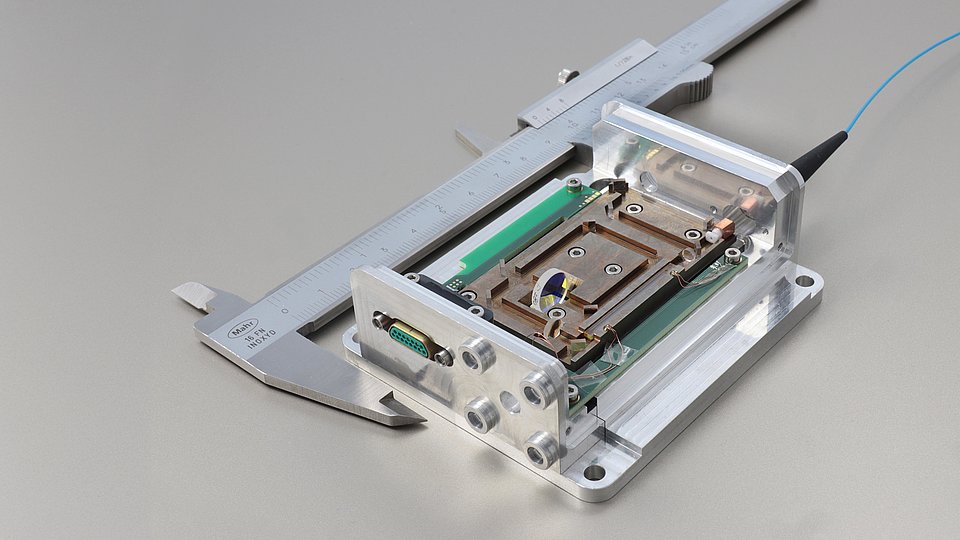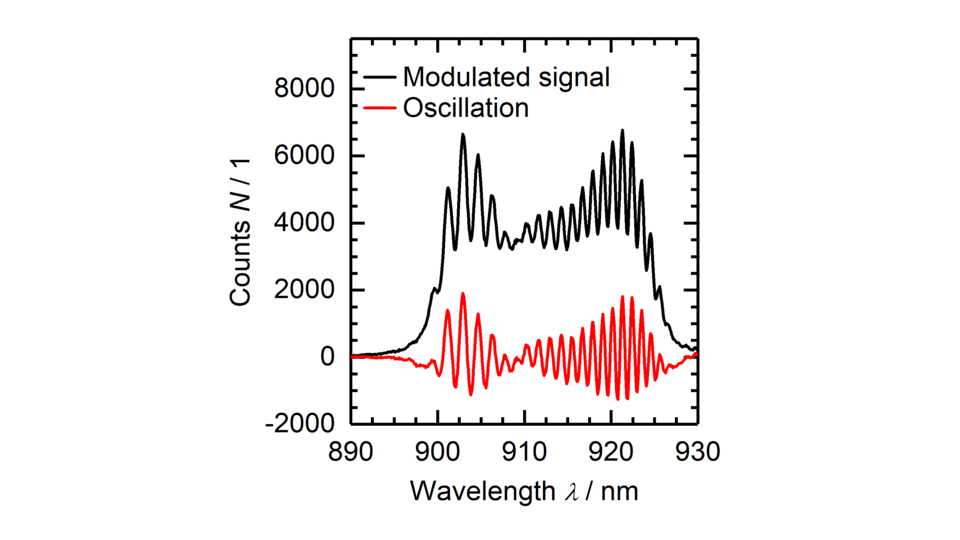Micromodules against microplastic pollution
Microplastic particles are increasingly coming to public awareness as a potential risk to animal and human health. These particles are found in various forms and originate from numerous sources. The term “microplastic” itself refers to a wide range of polymers that vary in shape and size. Hence, current efforts to qualify and quantify microplastics require massive efforts in collecting samples before analysis through standard methods is possible. Typically, such plastic particles are analyzed in a spectral region above 3 µm in wavelength, necessitating costly equipment that often has relatively low performance. To address these challenges in detecting microplastics, the Ferdinand-Braun-Institut has explored a new approach.
To the best of our knowledge, we have successfully manufactured the world’s first micro-integrated quantum interferometer module suitable for mobile detection of microplastics (Fig. 1). This compact module, with a footprint of only 98 x 75 mm², combines a nonlinear crystal and a Michelson interferometer for Spontaneous Parametric Down Conversion (SPDC). By analyzing “undetected photons,” the introduced micromodule enables probing in the MIR spectral range while requiring only NIR radiation analysis with standard and compact equipment.
Quantum interference, the enabling effect of this technological approach, has been demonstrated with a visibility greater than 30 % (Fig. 2). Simultaneously, SPDC photon pairs were generated with an efficiency of > 109 / W of pump power. Driven by 720 nm pump radiation, photon pairs at spectral ranges of λs ≈ 890 – 930 nm and λi ≈ 3.2 – 3.6 µm for signal and idler have been generated.
The results obtained with this module allow for further field testing to qualify and quantify microplastics in aqueous solutions, such as sewage water. With its innovative design and effective approach, this technology has the potential to improve the accessibility and performance of microplastic detection with unparalleled efficiency, addressing significant environmental and health concerns.
This work is sponsored by the German Federal Ministry of Education and Research (BMBF) within the project “Sim-QPla” (FKZ 13N15943).

